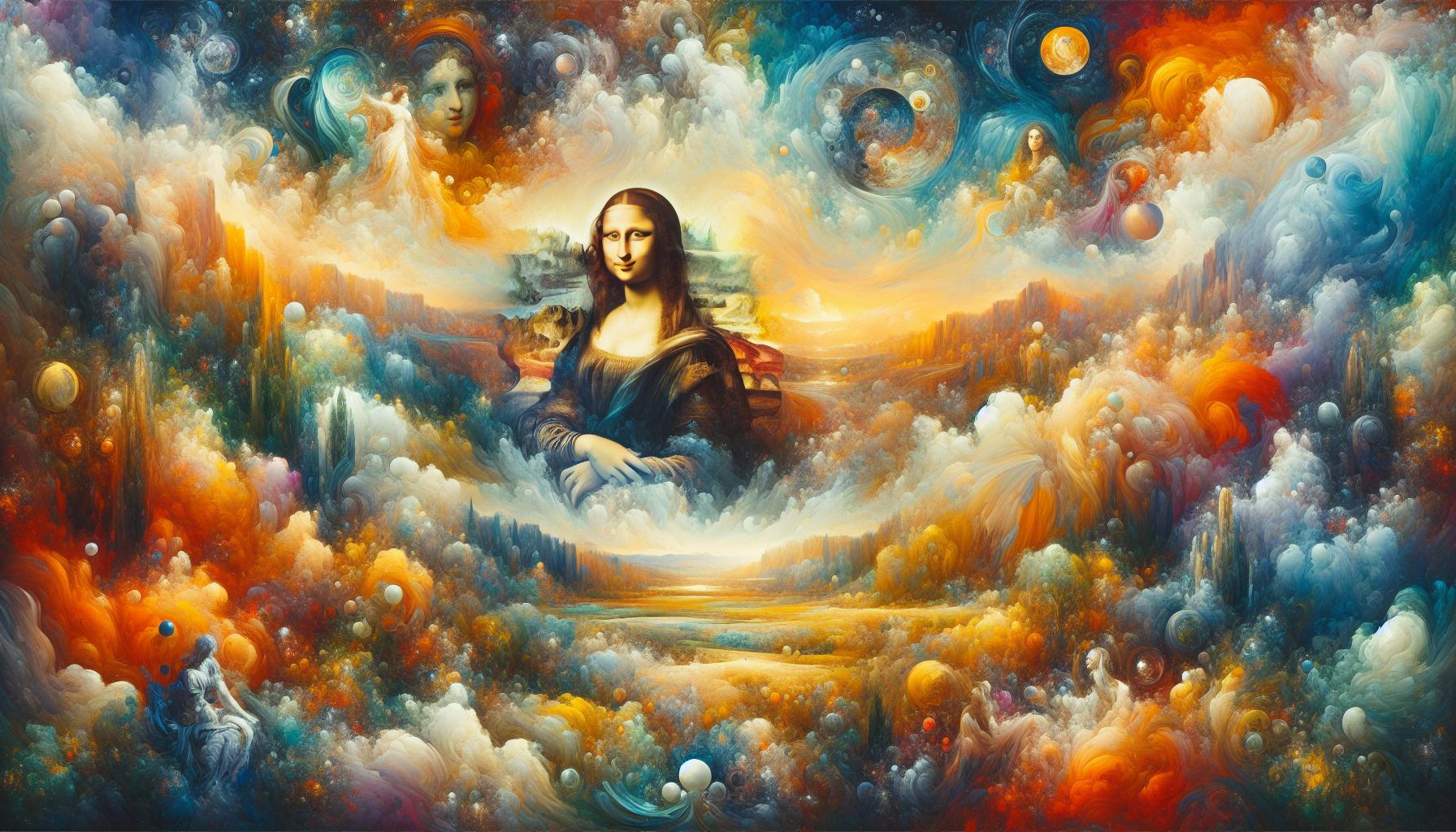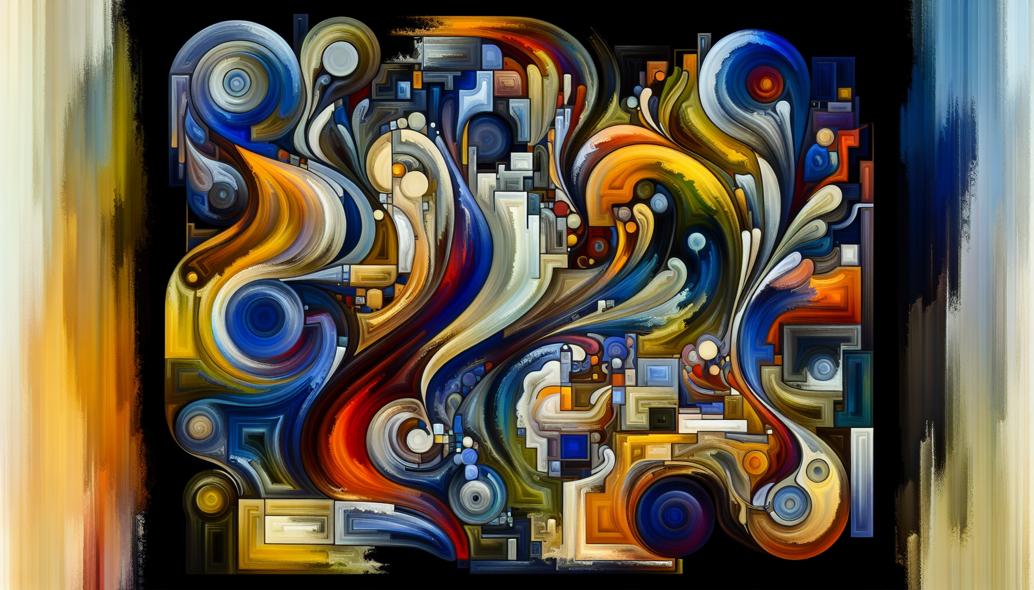Creating Emotion with Bold Color Schemes in Abstract Art
Dive into the world of abstract art where bold color schemes serve as a powerful emotional language. Discover how artists use color to evoke deep emotion and transcend mere visuals. Unveil the secrets of creating emotional resonance with vibrant palettes!

Unveiling the Palette of Emotion: Bold Color Schemes in Abstract Art
In the realm of abstract art, the power of color cannot be overstated. Artists wield bold color schemes as instruments of emotional expression, crafting works that resonate on a visceral level. The dialogue between color and emotion is profound, and through the careful application of color theory and abstract techniques, artists can manipulate viewers' experiences and perceptions. This blog post delves into the intricacies of creating emotion with bold color schemes in abstract art, offering an expert-level exploration of techniques and insights.
The Language of Color in Abstract Art
Abstract art, at its core, is an exploration of shape, form, color, and texture without reliance on recognizable subjects. In this genre, colors transcend their role as mere visual elements—they become the very essence of communication. Bold color schemes serve as conduits for emotional expression, allowing artists to convey intense experiences without representational imagery.
Color theory, the study of color and its impact, serves as the backbone for understanding how to deploy these hues effectively. By comprehending the psychological and cultural associations of colors, artists can strategically select palettes that evoke specific feelings. For instance, warm colors like reds and yellows may evoke excitement or anger, while cooler tones like blues and greens can impart calmness or melancholy.
The Science Behind Emotional Expression
Color theory isn't solely about picking colors that look good together; it's about understanding and harnessing the power of color interactions. The emotional impact of a bold color scheme can be dissected through various lenses of color theory, including hue, saturation, and value.
- Hue refers to the position of the color on the color wheel. The choice of hue is crucial in eliciting emotional responses. Vibrant, warm hues can stimulate a feeling of warmth and energy, whereas cool hues can invoke tranquility and introspection.
- Saturation is the intensity or purity of a color. High saturation colors are vivid and can evoke powerful emotions, while muted colors convey subtlety and sophistication.
- Value, the lightness or darkness of a color, determines contrast and visual impact. High contrast in value adds drama and tension, while lower contrast offers harmony and peace.
Understanding these principles is fundamental in orchestrating the desired emotional response in abstract art. Artists like Mark Rothko and Wassily Kandinsky exemplify the mastery of color in their works, demonstrating how bold color schemes can narrate complex emotional tales.
Abstract Techniques for Mastering Color
Beyond theoretical understanding, the practical application of bold color schemes involves an array of abstract techniques. These methods support artists in expressing their emotional vision through color manipulation.
One prominent technique is layering. By applying multiple layers of varying opacity, artists create depth and complexity. Each layer can represent different facets of an emotion or convey the evolution of a feeling. The interplay of colors through layers offers a dynamic experience to the viewer, who may perceive subtle changes with different viewing angles or lighting.
Another vital technique is color juxtaposition, which involves placing contrasting colors side by side. This results in a visual dialogue between the colors that heightens emotional impact. Complementary colors—those opposite each other on the color wheel—are particularly effective in this technique, as they simultaneously clash and enhance one another.

Brushwork also plays a critical role in abstract art's emotional lexicon. The type of brushstroke or application method can significantly alter the feel of a piece. Energetic and broad strokes might inject vibrancy and urgency, while delicate, intricate patterns contribute to a contemplative or restrained vibe. Artists may even employ non-traditional tools, such as palette knives or fingers, to create unique textures and effects.
Harmonizing Emotions with Color Schemes
Crafting a successful emotional expression through bold color schemes necessitates a harmonization of intent, theory, and technique. While it is important to understand the general emotional connotations of colors, artists should also trust their instincts and emotional intelligence. Personal experiences, cultural background, and individual sensibilities can profoundly influence how colors are perceived and interpreted.
- Monochromatic schemes offer a focused and subtle exploration of a single color's emotional depth by varying its shades and tints. This approach can reflect introspection, unity, or purity.
- Analogous schemes, involving colors adjacent on the color wheel, produce harmonious compositions that communicate cohesion and comfort, ideal for serene or tender emotions.
- Triadic color schemes, using three colors evenly spaced on the color wheel, provide a balanced yet vibrant look that can express energy and dynamism.
Exploring Emotional Depths through Experimentation
Experimentation is the cornerstone of abstract art. While guidelines and theories provide a foundation, true artistic innovation often arises when one defies convention. Artists are encouraged to explore atypical color combinations and techniques to uncover new modes of emotional expression.
Intuition is an invaluable tool in this process. Allowing intuition to guide color selection and composition can lead to unexpected and profound results. Abstract art thrives on the unique and the personal, making every piece a journey both for the creator and the viewer.
Feedback and reflection also enhance an artist's understanding of their work's emotional impact. Engaging with others to gather interpretations can reveal multiple perspectives, enriching the artwork's narrative and the artist's future endeavors.
Conclusion: Color as a Conduit for Emotion
In the mesmerizing world of abstract art, bold color schemes act as a bridge between the artist's inner world and the audience's emotional reception. By leveraging color theory and mastering abstract techniques, artists can craft experiences that transcend words, using color to speak the language of the heart.
The journey of creating emotion with color is deeply personal and infinite in its variations. Artists embrace the interplay of theory and intuition, tradition and experimentation, as they navigate the spectrum of human emotions. In the end, it is this vibrant tapestry of color that enables abstract art to captivate and commune with its viewers on the most profound levels.
